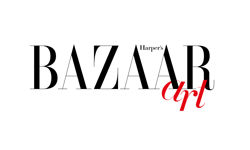Sponsored content has been around for eons. But thanks to magazines’ need for new revenue in the face of declining print advertising and newsstand sales (coupled with heavy investment in digital initiatives), it’s seeing new life in formats and platforms bearing little resemblance to familiar, non-controversial print “advertorials”.
American Society of Magazine Editors (ASME) standards state that sponsored content is supposed to be clearly labelled as advertising. Relatively few mainstream consumer magazines have breached that guideline, up to now.
But that may be changing, due to the mounting pressure on magazines. Advertisers are not only shifting marketing budgets to social, mobile and other digital media, but creating home-grown custom-content vehicles - bypassing traditional media outlets with content-heavy sites, branded magazines and other platforms.
Marketers are focused on breaking through ad clutter and “engaging” consumers in “conversations” so as to tap the power of word-of-mouth and (in theory) build brand loyalty that translates to sales. To stay in the game, magazines must now offer “content marketing” or (the latest euphemism for advertorials) “native advertising” opportunities. At any rate, that seems to be the growing consensus among publishers, based on the proliferation of new platforms that challenge traditional “church / state” policies.
One of the most visible / commented-on examples of content marketing is Forbes’s AdVoice (now renamed BrandVoice) platform, in place online and in print since 2010. BrandVoice pieces carry a tagline at the top, “Connecting marketers to the Forbes audience”. On Forbes.com, a link connects to an explanation that the content is “written, edited and produced by the marketer”.
Forbes Media chief product officer Lewis DVorkin argues that readers today want content from experts, including marketer / brand experts (as long as the source is “transparently identified”), and that this is a logical, desirable element within Forbes’s overall new content model. In that model, staff-written content is joined by prolific content from a huge pool of freelancers and “expert, vetted” contributors. All are expected to engage actively with readers, and monitored on their readership / engagement metrics. This, says DVorkin, is a “sustainable model for ad-supported journalism” in the digital age.
Forbes told Advertising Age that 10% of its overall 2012 revenue came from advertisers willing to spend at least $1 million annually on ad packages that earn them participation in BrandVoice. And with new (less pricey) package variations in the works, the platform’s contribution is expected to rise to 25% next year. Ad Age noted that the platform’s true contribution to revenue and profitability is somewhat murky.
Still, Forbes is convinced that its model will prove visionary, and it’s already far from alone. Among magazine-based media brands, similar sponsored-content platforms can be found on Wired.com and TheAtlantic.com, to name two. Atlantic Media reports that 55% of its revenue is now digital, and that more than half of that comes from “native advertising” formats.
For some publishers, providing relevant editorial content for use in marketers’ “content hubs” or “content widgets” is another new revenue stream. And for some, including Source Interlink Media, licensed content is now a hugely important stream.
“Nonpaid elements”
While not content marketing per se, the rapidly expanding e-commerce partnerships between magazine publishers and e-tailers or products certainly pose questions about the commercialisation of magazine brands. One of many examples: Harper’s Bazaar is now featuring Hermès shoes on its ShopBazaar.com e-commerce site, and the shoes are also being featured in the magazine’s editorial pages (marked with a letter “B” to indicate they’re for sale on ShopBazaar.com). “To have that kind of endorsement is priceless,” Hermès USA president / CEO Robert Chaves told WWD.
Most eyebrow-raising of all: two recent formats seen in major publishers’ print magazines. The first: December issues of 14 Condé Nast magazines (at least subscriber copies) bore attachments, obscuring everything but the titles’ logos, that illustrated how the new Windows 8 Start screen would display content tailored for the chief editor of the given Condé title. No “sponsored” or “advertising” note anywhere on these outserts.
A Condé spokesperson told Advertising Age that the attachments weren’t paid ads, just Condé’s own initiative to tell readers about its content on Windows 8 – although adding that the outserts were “coordinated” with the paid Windows 8 ads inside the issues, and “tied together under the umbrella of [Condé’s] holistic relationship” with Microsoft.
The Starcom MediaVest executive handing Microsoft’s ad planning / buying was far franker. She enthused about the “ground-breaking, multifaceted, paid program with nonpaid elements” between Microsoft and Condé, which includes covers (“the highest-profile real estate of a magazine”), plus in-book, online and video ads. “We’re proud to partner with Condé Nast as they represent agents of change who recognise the need to push the boundaries to deliver powerful, arresting and first-to-market executions," she said.
Second example: January issues of several Meredith titles, including Family Circle and Better Homes and Gardens, have tables of contents promoting Windows 8 (again, using the “Start screen” illustration premise) – facing paid ads for Windows 8, and bearing the same colour scheme. Meredith said this demonstrated its brands’ “multi-channel reach and delivery,” and “did not influence or change the editorial delivered” to its readers.
ASME said it was “looking” at these editorial / advertising executions. It remains to be seen if it will have the guts to take on these powerful players.
Some argue that “integrating” relevant advertising is preferable to intrusive advertising formats, from the reader’s standpoint. Maybe. Taking a rigid stance about the complicated editorial / commercial demarcation issues now facing magazines is neither constructive nor realistic. However, I’m not alone in thinking that erasing boundaries could threaten the credibility that most differentiates magazine brands in advertisers’ and readers’ minds from the plethora of other information sources out there.
Ben Kunz, VP of strategic planning for media planning / buying agency Mediaassociates, recently said that, in his view, “if a marketer or publication doesn’t clearly disclose ‘native advertising’ as being sponsored, this leads to user confusion, and that eventually erodes the value of the entire publication by breaking user trust.”












